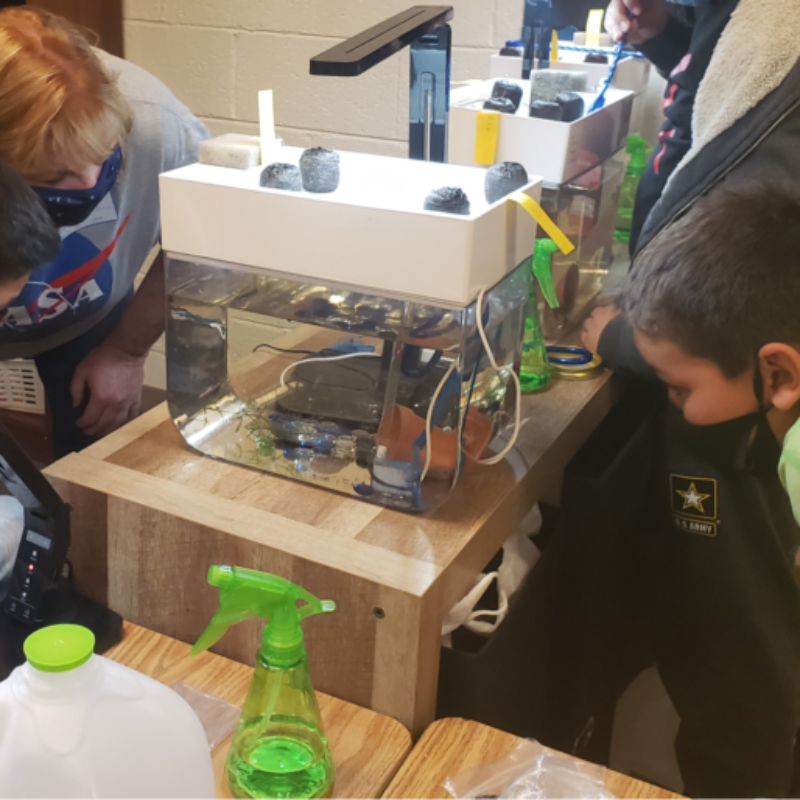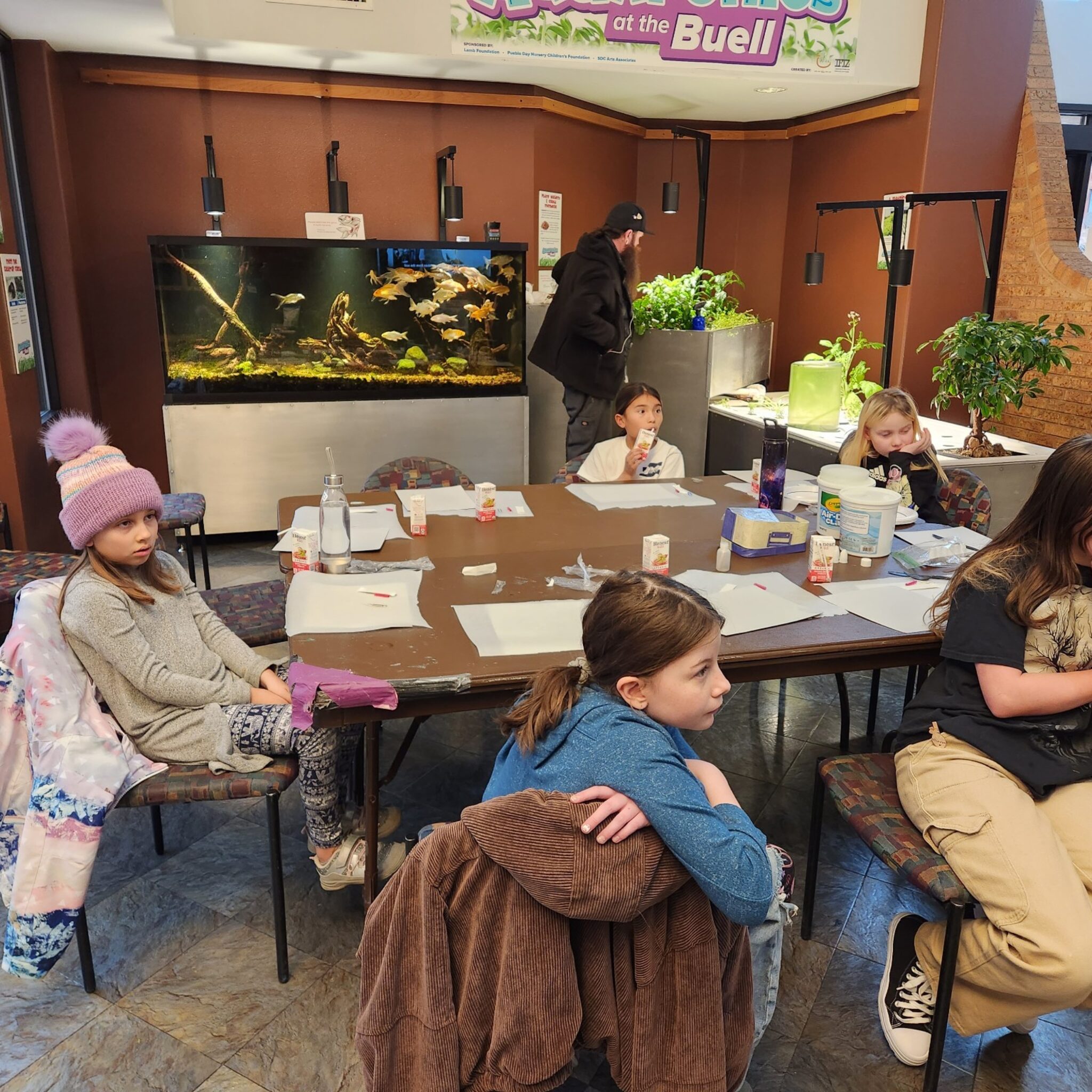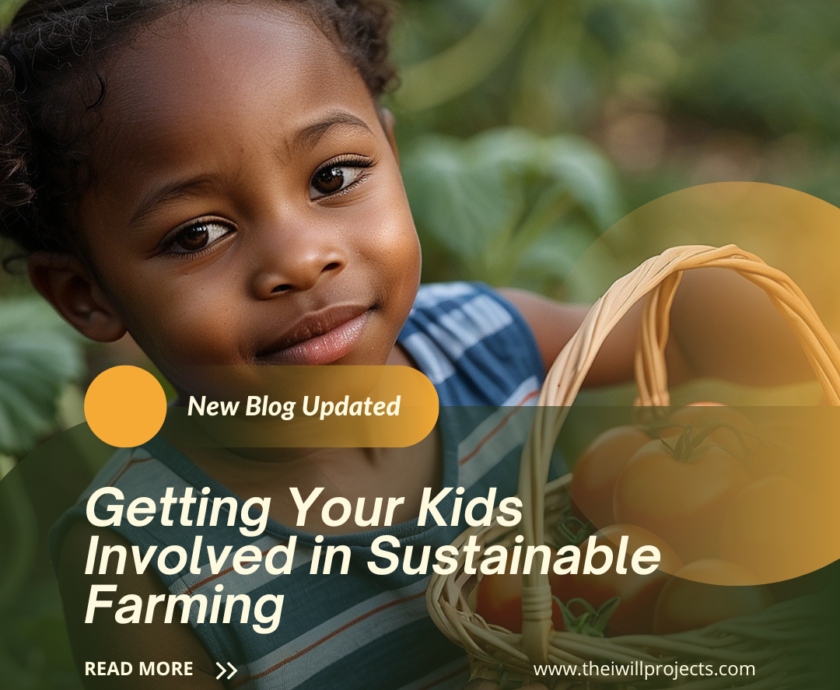“A garden is a grand teacher. It teaches patience and careful watchfulness; it teaches industry and thrift; above all, it teaches entire trust.” — Gertrude Jekyll
TweetTable of contents
Introduction
Gardening with kids offers a blend of fun, education, and outdoor activity that can be enjoyed by the whole family. It’s not just about planting seeds and watching them grow; it’s an opportunity to teach children responsibility, science, and a deep appreciation for the environment.
By turning gardening into an interactive, hands-on experience, parents can foster lifelong skills in their children, all while making lasting memories together.
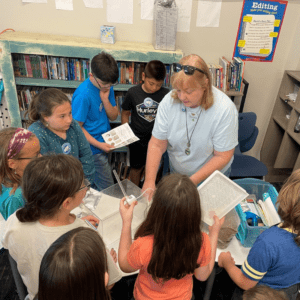
Benefits of Gardening with Kids
Gardening provides a rich platform for kids to learn about nature, science, and the world around them.
The process of planting, nurturing, and harvesting helps teach responsibility—plants rely on consistent care, and kids quickly understand that their garden’s health is in their hands. They also learn patience, as plants take time to grow. The slow and steady development teaches them that good things come to those who wait.
Moreover, gardening helps children appreciate the life-cycle of plants and the environment. Through composting and recycling, they learn about sustainability and environmental stewardship. They also develop fine motor skills by using gardening tools and engaging in tasks such as planting seeds or watering.
How to Start Gardening with Kids
Getting started with gardening is as simple as preparing your tools and selecting plants that are easy to grow.
Depending on the age of your child, you’ll want to ensure that the gardening tools are safe and appropriate for smaller hands. Children’s gardening sets are widely available and come in bright colors that kids love.
To make gardening with kids a success, begin by choosing simple, hardy plants that grow quickly. Radishes, beans, and sunflowers are excellent options, as they sprout quickly, keeping your child engaged and excited about the process. You can also involve your children in selecting seeds, giving them a sense of ownership in the project.
Once the garden is ready, assign manageable tasks to your kids. Younger children can help with watering and pulling weeds, while older kids can assist with planting and keeping an eye on garden growth.
By delegating responsibilities, you not only make the process fun but also introduce a sense of achievement.
Best Plants for Kids to Grow
Selecting the right plants can make or break your child’s interest in gardening. Some plants grow faster, flower earlier, or produce fun-to-harvest crops that hold a child’s attention. Among the top picks are:
- Sunflowers: These tall, bright flowers grow fast and are easy for little hands to plant.
- Radishes: Quick-growing and easy to pull out of the soil, radishes give kids an instant reward.
- Strawberries: Kids love the sweet fruit, and they’ll eagerly await the harvest.
- Cherry Tomatoes: These small, colorful tomatoes are fun to pluck and can be eaten straight from the garden.
- Beans: Pole beans climb, making it fun for kids to create trellises and watch them grow.
The Importance of Hands-on Learning
Hands-on learning is one of the key reasons why gardening is such an effective teaching tool.
In today’s technology-driven world, children spend less time outdoors and more time on screens. Gardening shifts that focus back to the natural world, stimulating their senses. They get to touch soil, smell flowers, see the bright colors of vegetables and flowers, and even taste their home-grown produce.
Gardening also nurtures problem-solving skills. Kids learn how to deal with challenges like pest control, weather changes, and the sometimes unpredictable nature of plant growth.
Every day in the garden presents new lessons about the cycles of life, photosynthesis, and ecosystems.
Gardening Teaches Patience
One of the virtues that gardening instills in children is patience.
In a world where everything seems to happen instantly, gardening with kids slows down the pace.
Children are used to getting what they want quickly—whether it’s food, entertainment, or attention—but a garden doesn’t operate on such a fast timeline. It can take weeks or even months to see the fruits of their labor, teaching them that some of life’s rewards are worth the wait.
Gardening as a Family Bonding Activity
Gardening isn’t just an educational tool; it’s also a great way for families to bond.
Working together in the garden fosters teamwork and creates opportunities for meaningful conversations.
Parents and children can spend quality time together outdoors, away from the distractions of daily life. It’s a fantastic way to unwind, relax, and enjoy each other’s company while working towards a common goal.
Watching a garden grow and flourish can create a deep sense of pride, not just in children but in the entire family. It’s a group project where everyone plays a role, from choosing what to plant to enjoying the eventual harvest.
Educational Benefits of Gardening
Gardening with kids opens the door to a variety of educational opportunities. It’s a hands-on way for them to learn about plant biology, soil composition, the water cycle, and the importance of sunlight.
Math also plays a role, as children measure plant growth, count seeds, and even track the days until harvest.
For slightly older kids, gardening can introduce basic scientific experiments. For example, you can compare how different plants respond to varying amounts of sunlight or water.
They can learn the difference between annual and perennial plants, understand photosynthesis, and even explore how soil pH affects growth.
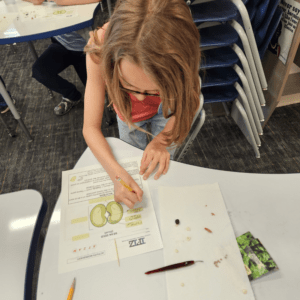
Making Gardening Fun for Kids
To truly capture a child’s interest in gardening, it’s essential to make it fun. There are numerous creative ways to do this, such as:
- Garden Art: Have kids paint rocks, plant markers, or flowerpots to personalize their garden.
- Garden-Themed Crafts: Create scarecrows or wind chimes to decorate your space.
- Garden Games: Set up scavenger hunts or contests to see who can find the most worms or grow the tallest plant.
- Themed Gardens: Make a “pizza garden” where kids grow ingredients like tomatoes, basil, and oregano, then use the harvest to make their own pizza.
Incorporating creativity into the gardening process helps sustain children’s interest and transforms the garden into a magical place of discovery.
The Joy of Harvesting
One of the most rewarding experiences for both children and adults is harvesting the fruits (and vegetables) of their labor.
After weeks or months of nurturing the garden, kids finally get to see—and taste—the results. This moment brings with it a profound sense of accomplishment, teaching children the value of hard work and persistence.
Harvesting is also a great opportunity to teach kids about the importance of fresh, healthy food. Whether they’re picking strawberries, digging up carrots, or snapping green beans off the vine, they learn where their food comes from and how it grows.
Many parents find that gardening with kids encourages them to try new vegetables, making harvest time a great tool for introducing healthier eating habits.
To make the experience even more enjoyable, consider creating special harvesting traditions. For instance, you could prepare a meal together using only ingredients from the garden. By involving children in this process, from seed to plate, they develop a deeper connection to their food and a greater appreciation for the effort it takes to grow it.
Gardening for Emotional Well-being
Gardening provides not only physical exercise but also a therapeutic space where children (and adults) can connect with nature.
Studies have shown that spending time outdoors can reduce stress, anxiety, and symptoms of ADHD in children.
The simple act of being in nature—whether it’s digging in the dirt, listening to birds, or watching plants grow—can have a calming effect.
For kids, gardening becomes a creative outlet. They can express themselves through the plants they grow, the designs they create, and the care they provide to their garden. This emotional connection helps build self-esteem and gives them a sense of ownership over their space.
Additionally, gardening can foster mindfulness. While working in the garden, children naturally slow down, becoming more aware of their surroundings and the small details of the plants they’re caring for. This gentle, repetitive activity allows them to focus their attention and find peace in the present moment.
Exploring Nature through Gardening
Gardening with kids is a wonderful way to give them hands-on experience with the natural world. Through the simple act of observing plants, insects, and animals in the garden, they learn about ecosystems, food chains, and biodiversity. Each day in the garden offers an opportunity to observe the interactions between plants, pollinators, and even pests.
As children watch worms aerating the soil, bees pollinating flowers, or ladybugs munching on aphids, they gain a greater appreciation for the interconnectedness of life. You can encourage this curiosity by keeping a nature journal where kids can draw or write about what they see in the garden. This fosters their observational skills and gives them a deeper understanding of how living things interact with their environment.
For an added layer of learning, you can introduce scientific concepts, such as photosynthesis, water cycles, and plant biology, in a fun and accessible way.
Explain to your children how plants convert sunlight into food or how water travels through the soil to nourish roots. Gardening becomes an outdoor classroom where lessons come to life.
Teaching Responsibility through Gardening
Gardening is an excellent way to teach children about responsibility. Plants need consistent care, and kids quickly learn that if they forget to water or neglect their garden, the plants suffer. This teaches them that their actions (or inactions) have real consequences.
Assigning specific tasks to children gives them ownership of the garden and a sense of responsibility for its well-being. For example, one child could be in charge of watering, while another monitors the garden for weeds or pests. By taking on these roles, they not only learn the importance of regular effort but also develop time management skills and an understanding of cause and effect.
Over time, kids begin to see the rewards of their work. They watch their plants thrive under their care, and that success reinforces the value of taking responsibility for something and nurturing it with attention and effort.
Gardening Safety Tips for Kids
While gardening is a fun and educational activity, it’s important to keep safety in mind, especially when working with young children. Here are a few key safety tips to ensure that gardening remains a safe and enjoyable experience for all:
- Use child-friendly tools: Ensure that tools are the appropriate size for small hands and have no sharp edges. Many stores sell child-specific gardening sets that are safe and easy to use.
- Wear protective gear: Encourage kids to wear gloves to protect their hands from sharp objects or insects. A sunhat and sunscreen are essential for protection from the sun.
- Supervise when using tools: Always supervise children when they are using garden tools, especially if they are working with spades, pruners, or other items that could cause injury.
- Teach proper handling of plants and soil: Show children how to safely handle plants, including how to avoid touching harmful plants like poison ivy, and explain why they shouldn’t eat any plant parts without checking with an adult.
- Water safely: When watering the garden, ensure children use hoses or watering cans properly and are aware of any water hazards like ponds or buckets that could pose a drowning risk.
By taking these precautions, you can ensure that gardening with kids remains a positive, safe, and enriching activity for everyone involved.
Gardening Tools for Kids
Gardening tools designed for children are essential for making the experience safe and enjoyable. Child-sized tools not only help them feel more involved but also ensure that they can handle tasks without the frustration of tools that are too heavy or cumbersome.
Some of the best tools for kids include:
- Trowels: Small and easy to handle, perfect for digging and planting.
- Watering cans: Lightweight and easy to pour, making watering plants a fun and manageable task.
- Gardening gloves: Essential for protecting little hands from dirt, insects, and sharp objects.
- Small rakes: Great for gathering leaves or smoothing out the soil.
- Knee pads: Helpful for protecting knees while kneeling on the ground during planting or weeding.
Having their own set of tools gives children a sense of independence and responsibility in the garden. They’ll be more excited to participate when they feel equipped for the task.
Creating a Sensory Garden
A sensory garden is a wonderful way to engage children’s senses while they learn about the world of plants. This type of garden is designed to stimulate all five senses—sight, smell, sound, touch, and taste—through a variety of plants and materials.
- Sight: Choose brightly colored flowers like marigolds, sunflowers, or nasturtiums to captivate young eyes.
- Smell: Include fragrant plants such as lavender, mint, and rosemary to engage their sense of smell.
- Touch: Use plants with interesting textures, such as lamb’s ear (soft and velvety) or succulents (firm and smooth), to encourage tactile exploration.
- Sound: Plant grasses like bamboo or tall reeds that rustle in the wind, or include a small water feature for a calming auditory experience.
- Taste: Edible plants like strawberries, peas, and herbs allow kids to explore their sense of taste by sampling fresh garden produce.
Sensory gardens are especially beneficial for children with sensory processing disorders, as they provide a safe and engaging environment to explore different stimuli at their own pace.
The Role of Composting in Gardening
Composting is an excellent way to introduce kids to the concept of recycling and sustainability, making gardening with kids even more enriching.
By composting kitchen scraps and garden waste, children can learn about the natural process of decomposition and how it benefits the soil and plants.
To get started with composting, create a compost bin or pile where kids can deposit vegetable peelings, fruit scraps, eggshells, and garden clippings. Teach them about what can and cannot be composted, and explain how compost enriches the soil by returning valuable nutrients to it.
Composting is also a great way to introduce the concept of reducing waste. Kids learn that instead of throwing away food scraps, they can transform them into something useful for the garden. It’s a powerful lesson in sustainability and environmental responsibility.

Growing Vegetables with Kids
Growing vegetables is one of the most satisfying parts of gardening with children. Not only do they get to watch their plants grow, but they also get the added bonus of eating the vegetables they’ve cultivated themselves.
Some of the best vegetables to grow with kids include:
- Carrots: Kids love pulling carrots out of the ground, and they’re a great crop for teaching about root vegetables.
- Lettuce: Quick-growing and easy to harvest, lettuce gives kids fast results, which helps maintain their interest.
- Peas: These sweet, easy-to-pick vegetables grow on vines, making them fun to harvest.
- Pumpkins: If you have the space, pumpkins are a fun and rewarding long-term project. Kids can plant them in the spring and carve them in the fall!
Involving kids in the entire process—from planting the seeds to harvesting and eating the vegetables—gives them a full understanding of the food cycle.
Using Garden Themes for Learning
Garden themes can make gardening more engaging and educational for kids. By creating themed garden spaces, you can tailor the learning experience to your child’s interests. Some fun and educational themes include:
- Pizza Garden: Grow tomatoes, basil, oregano, and peppers, then use the harvest to make homemade pizza.
- Butterfly Garden: Plant flowers like milkweed, lavender, and zinnias to attract butterflies, teaching kids about pollinators.
- Herb Garden: Let kids plant and care for herbs like thyme, rosemary, and parsley, which they can use to season meals.
- Rainbow Garden: Choose plants in a variety of colors to create a rainbow effect, teaching children about the spectrum of colors in nature.
Theme gardens help focus a child’s attention and provide a specific goal for the gardening season, making the experience both fun and educational.
Encouraging Creativity in the Garden
Gardening with kids is a wonderful opportunity for children to express their creativity. Whether it’s designing their own garden layout, decorating pots, or even creating mini-gardens, there are countless ways to foster a child’s imagination in the garden.
One way to encourage creativity is by involving children in garden design. Allow them to plan which plants go where, or perhaps let them create themed sections of the garden. You could also introduce garden art—painting stones as plant markers, creating DIY bird feeders, or making a colorful wind chime to add personality to their space.
For younger kids, creating a fairy garden or dinosaur garden can turn gardening into a magical adventure. Simply plant small succulents or low-growing plants, and then let them place figurines of their favorite characters. This kind of imaginative play encourages children to see the garden as a living, evolving space that they can shape with their creativity.
Another fun idea is building garden structures like bean teepees or sunflower forts. These structures not only add to the garden’s beauty but also give kids a hands-on project that promotes teamwork, creativity, and excitement as the plants grow into living structures.
By incorporating art and storytelling into the gardening experience, children will see the garden as an extension of their imagination, where both plants and ideas can flourish.
Garden Science Experiments
Gardening offers endless opportunities for science experiments that allow kids to explore biology, chemistry, and environmental science in a hands-on way. These simple experiments can transform your garden into a living laboratory:
- Water absorption: Test how different types of soil absorb water. Fill different pots with sand, clay, and garden soil, and then pour equal amounts of water into each. Ask your kids to observe and compare the speed and amount of water absorbed.
- Seed germination: Start a seed experiment by planting seeds in different conditions—some with sunlight, some in the dark, others with different levels of water. Track how long it takes for each seed to sprout and grow. This teaches kids about the importance of sunlight, water, and nutrients for plant growth.
- Photosynthesis demonstration: You can easily show the effects of sunlight by placing one plant in a sunny spot and another in the shade. Ask your children to observe which plant grows stronger and healthier, explaining how sunlight powers photosynthesis.
These simple experiments teach children essential scientific concepts while engaging their curiosity. You can record results in a garden journal, adding an educational component where kids track their experiments and reflect on what they’ve learned.
Seasonal Gardening Activities
Gardening is not a one-season activity—it changes throughout the year, offering unique learning experiences in each season. Adjusting your gardening tasks according to the weather and plant life-cycle can keep children engaged and teach them about the natural rhythms of nature.
- Spring: This is the ideal time for planting seeds and watching the garden come to life. Kids can help start seedlings indoors or directly sow seeds outdoors, learning about plant growth and the importance of the changing seasons.
- Summer: In summer, the garden is in full bloom. Children can take on more watering, weeding, and pest control tasks. It’s also the time to enjoy the first harvests—picking fresh fruits and vegetables becomes a highlight of the season.
- Fall: As the growing season winds down, fall provides an opportunity to teach children about composting and preparing the garden for winter. They can help collect fallen leaves and create compost piles, while also planting cool-season crops like lettuce and carrots.
- Winter: Gardening doesn’t have to stop in winter. You can bring the garden indoors by starting an indoor herb garden or growing plants like microgreens. Children can also help with planning next year’s garden, choosing seeds, and designing layouts for the upcoming season.
By tailoring activities to the seasons, gardening with kids becomes a year-round process, teaching them that plants require attention and care at every stage of their life-cycle.
Creating a Butterfly or Pollinator Garden
One of the most exciting ways to introduce children to the importance of biodiversity and ecosystems is by creating a butterfly or pollinator garden. These special gardens attract bees, butterflies, and other pollinators, teaching kids about the vital role these creatures play in helping plants grow and reproduce.
To create a pollinator garden, plant native flowers that are rich in nectar, such as:
- Milkweed: Essential for monarch butterflies, which lay their eggs on milkweed plants.
- Lavender: Its fragrant flowers are a magnet for bees and butterflies.
- Coneflowers and zinnias: Bright, colorful flowers that bloom all summer, attracting various pollinators.
In addition to planting flowers, you can create a butterfly puddling station by placing a shallow dish filled with water and sand in the garden. Butterflies will visit to drink and soak up minerals. This is a great way to teach children about the connection between plants and animals in an ecosystem.
Encouraging kids to observe which pollinators visit their garden helps them understand the balance of nature and the importance of preserving these species. It also creates an engaging environment where they can witness biodiversity firsthand.
Incorporating Wildlife in Your Garden
Gardens can also be designed to attract more than just pollinators—inviting other forms of wildlife into your space can turn your garden into a mini-ecosystem that supports birds, insects, and small mammals. Involving children in creating a wildlife-friendly garden fosters empathy and responsibility for the creatures that share our world.
Here are a few ways to make your garden a haven for wildlife:
- Build birdhouses or feeders: Encourage birds to visit the garden by placing feeders and birdhouses. Children can take responsibility for keeping the feeders filled, and they’ll enjoy watching the birds come to eat.
- Create a wildlife pond: Even a small pond can attract frogs, dragonflies, and other water-loving creatures. A shallow dish filled with water can be enough to bring new wildlife into your space.
- Leave natural areas: Instead of keeping the garden overly manicured, allow some areas to grow wild with native plants. This provides shelter for insects and small animals.
Incorporating wildlife into your garden teaches kids about the interconnectedness of nature. They learn that a healthy garden isn’t just about the plants but also about the creatures that live within and around it.
Gardening and Sustainability
Gardening with kids is an excellent way to introduce them to the concept of sustainability and environmental responsibility. Through gardening, they learn that the choices we make can either help or harm the environment. Sustainable gardening practices teach children how to conserve resources, reduce waste, and take care of the planet.
Here are some ways to teach sustainability in the garden:
- Water conservation: Teach children to water the garden wisely by using rain barrels or watering early in the morning to reduce evaporation.
- Organic gardening: Explain why avoiding pesticides and chemicals is better for the environment and for the creatures that live in the garden.
- Seed saving: Show children how to collect seeds from plants at the end of the season, teaching them about the plant life-cycle and the importance of preserving biodiversity.
These practices help children understand that gardening is not just about growing plants but also about making choices that are mindful of the earth’s limited resources.
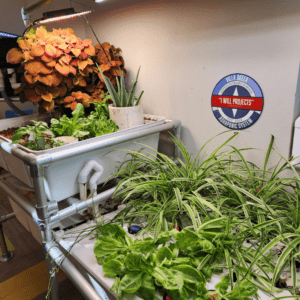
Gardening Indoors with Kids
Indoor gardening projects are perfect for rainy days, small spaces, or keeping the gardening fun going year-round. By growing plants indoors, children can continue learning about plant care even when outdoor gardening isn’t possible.
Some simple indoor gardening projects include:
- Herb gardens: Grow herbs like basil, mint, and parsley on a sunny windowsill. Herbs are easy to grow indoors and can be used in cooking, providing a full seed-to-table experience.
- Microgreens: Fast-growing and highly nutritious, microgreens can be grown on a tray indoors and harvested in just a few weeks.
- Succulents: Low-maintenance and fascinating in their shapes, succulents are perfect for children to care for indoors, as they require minimal watering.
Indoor gardening helps kids understand that plants don’t need large spaces to grow—they can thrive in small pots or containers, making gardening accessible to everyone.
Inspiring a Lifelong Love for Nature
Introducing children to gardening at a young age fosters a deep connection to nature that can last a lifetime.
Gardening with kids is more than a fun activity; it instills respect for the environment, curiosity about the natural world, and an understanding of the importance of sustainability.
By engaging kids in gardening, parents and educators can help create a generation that is more environmentally conscious, better stewards of the earth, and more appreciative of the beauty and diversity of life.
Encourage children to continue their gardening journey by exploring new plants, trying different gardening techniques, and taking care of the natural world around them. As they grow, the lessons learned in the garden will continue to shape their views on nature, conservation, and sustainability.
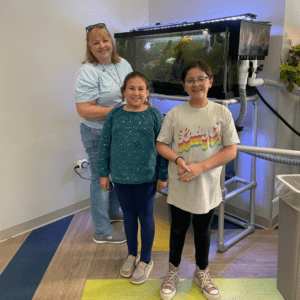
Gardening in Schools and Communities
Gardening doesn’t have to be limited to home. Many schools and communities offer programs that introduce children to gardening in a more structured environment, like the Indoor Farming Innovation Zone (IFIZ) that offers aquaponics education for kids. School gardens are becoming increasingly popular, providing students with hands-on learning experiences in science, nutrition, and environmental studies.
Community gardens also offer a unique opportunity for families and children to work together with others to grow food and flowers. These shared spaces build a sense of community, while also teaching kids about teamwork, cooperation, and shared responsibility.
Whether through school programs, community gardens, or neighborhood gardening clubs, children gain valuable social and educational experiences by gardening with others.
Celebrating Success in the Garden
Every milestone in the garden should be celebrated. Whether it’s the first seed sprouting, the first harvest, or a garden’s full bloom, recognizing these moments boosts children’s confidence and reinforces the hard work they’ve put in.
One way to celebrate success is by keeping a garden journal where children can document their gardening journey. They can draw pictures, take photos, or write about their experiences. This not only serves as a creative outlet but also helps them track their progress and celebrate their achievements over time.
Another idea is to host a harvest party, where children can share the fruits of their labor with friends and family. Use the vegetables and herbs from the garden to cook a meal together or simply enjoy a picnic surrounded by the beauty they’ve helped create.
By celebrating gardening successes, you reinforce the positive lessons of patience, perseverance, and teamwork that gardening teaches.
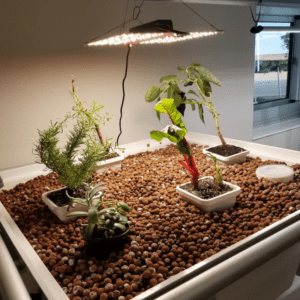
Conclusion
Gardening with kids is a rewarding experience that blends fun, education, and family bonding. From learning about responsibility and patience to exploring science and sustainability, children gain valuable life skills that extend far beyond the garden.
Whether you’re growing vegetables, flowers, or herbs, the lessons your children learn through gardening will stay with them for years to come. By creating a fun and nurturing environment, you’re not just cultivating plants—you’re fostering curiosity, creativity, and a lifelong love of nature.
FAQs
Sunflowers and radishes are great choices for young gardeners. Both grow quickly and provide visible results, keeping kids engaged.
How can I teach my child about sustainability through gardening?
Incorporate practices like composting, water conservation, and seed saving into your gardening routine. These teach children how to care for the environment while they care for their garden.
Can indoor gardening be as educational as outdoor gardening?
Yes! Indoor gardening offers opportunities to learn about plant care, the water cycle, and the importance of sunlight. Projects like growing herbs or microgreens are perfect for teaching these lessons indoors.
How can I make gardening more fun for my child?
Introduce creative elements like themed gardens, garden art projects, or scavenger hunts. Incorporating games and stories helps keep kids excited about gardening.
What safety precautions should I take when gardening with kids?
Ensure children use child-friendly tools and wear protective gear like gloves and hats. Always supervise when using sharp tools and teach children about safe plant handling.
At what age can children start gardening?
Children as young as toddlers can help with simple tasks like watering or planting seeds. As they grow, they can take on more responsibility in the garden.
The I Will Projects, a 501c3 Non-Profit, promotes diverse solutions for global challenges. Our IFIZ education programs, emphasizing aquaponics, and insect farming, empower communities through knowledge, collaboration, and sustainable innovation.



